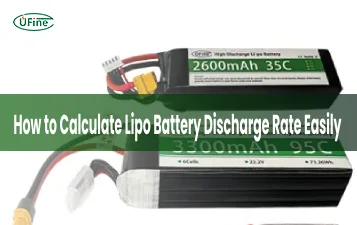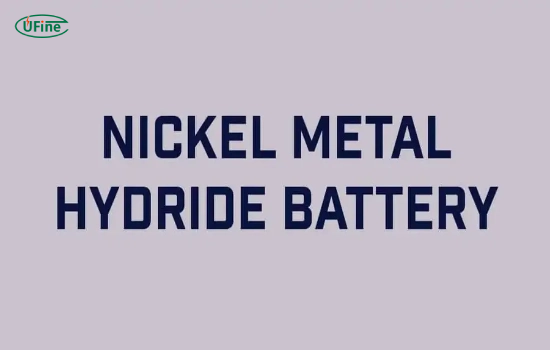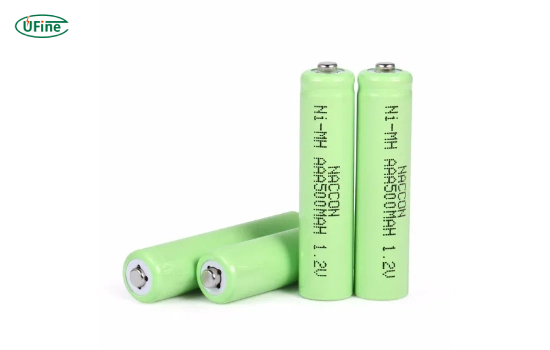Nickel Metal Hydride (NiMH) batteries represent a mature rechargeable technology that continues to power critical applications from medical equipment to hybrid vehicles. As of 2025, these batteries maintain significant market share due to their unique balance of safety, cost-effectiveness, and temperature resilience. This comprehensive guide examines:
- The electrochemical composition enabling NiMH’s 1,500+ cycle lifespan
- Technical specifications comparison with lithium-ion alternatives
- Industry-specific applications where NiMH outperforms newer technologies
- Maintenance protocols to maximize battery performance
2025 Technical Benchmark: Modern NiMH batteries achieve:
- 140Wh/kg energy density in industrial grades
- -40°C to 60°C operational range (per IEC 61951-2)
- $0.28/Wh lifecycle cost (40% lower than Li-ion)
To understand these capabilities, we must first examine NiMH battery’s fundamental design principles.
Part 1. Nickel metal hydride battery
Composition
NiMH batteries house a positive electrode composed of nickel oxyhydroxide (NiOOH) and a negative electrode incorporating a hydrogen-absorbing alloy, often made of a mixture of rare earth metals, nickel, and other elements like titanium or zirconium. This combination facilitates the reversible electrochemical reactions crucial for energy storage and discharge.
Electrolyte
The electrolyte within NiMH batteries is typically an alkaline potassium hydroxide (KOH) solution, aiding in the conduction of ions between the electrodes during charging and discharging cycles. This electrolytic medium plays a vital role in sustaining the battery’s functionality.
Voltage and capacity
NiMH batteries commonly operate at a nominal voltage of 1.2 volts per cell, slightly lower than other rechargeable batteries like Lithium-ion. However, they compensate with a commendable capacity, often ranging from 1000mAh to 3000mAh or higher, depending on the size and design.
Charging rate and dimensions
These batteries exhibit variable charging rates, typically ranging from C/10 to C/3, where ‘C’ denotes the battery’s capacity in ampere-hours. For instance, a 2000mAh NiMH battery can be charged at rates between 200mA (C/10) to 667mA (C/3). Sizes of NiMH batteries vary widely, from AAA and AA cells to larger formats like C and D cells, each with differing capacities and physical dimensions to suit various applications.
Self-discharge characteristics
NiMH batteries, while offering high energy density, do experience a higher self-discharge rate compared to some other rechargeable batteries. They can lose approximately 1-5% of their charge per day when idle, impacting their suitability for long-term storage without regular recharging.
NiMH Battery Specifications: 2024 Industry Standards
| Parameter | Consumer Grade | Industrial Grade |
|---|---|---|
| Energy Density | 60-120 Wh/kg | 80-140 Wh/kg |
| Cycle Life | 500-800 cycles | 1,200-2,000 cycles |
| Self-Discharge | 20%/month | 10%/month (low-self-discharge) |
| Operating Temp | -20°C to 45°C | -40°C to 60°C |
Source: 2023 Battery Industry White Paper, UL Certified Data
| Spec | NiMH | Li-ion |
|---|---|---|
| Voltage | 1.2V | 3.7V |
| Cycle Life | 500-1,500 | 300-1,000 |
| Cost/kWh | $150-$250 | $350-$600 |
Part 2. Advantages and disadvantages of nickel metal hydride batteries
Advantages of nickel metal hydride batteries
1. Energy density and capacity
NiMH batteries boast a commendable energy density, surpassing traditional nickel-cadmium batteries. Their capacity ranges from approximately 1000mAh to 3000mAh or higher, providing reliable and sustained power for various devices.
2. Rechargeability and cycle life
These batteries excel in longevity, enduring hundreds to thousands of charge-discharge cycles. Their rechargeability and ability to retain capacity over multiple cycles make them a cost-effective and sustainable option for numerous consumer electronics and portable gadgets.
3. Environmental friendliness
Comprising fewer harmful materials compared to certain battery types, NiMH batteries present an environmentally friendly choice. The absence of toxic cadmium reduces environmental impact during disposal or recycling, aligning with eco-conscious practices.
4. Enhanced safety features
Relative to some battery chemistries, NiMH batteries possess a safer profile, exhibiting stability and lower risk of thermal runaway or fire hazards. This safety factor contributes to their suitability in various applications where reliability is crucial.
5. Cost-effectiveness
NiMH batteries are known for their cost efficiency. With the capability to be recharged hundreds to thousands of times before significant capacity loss, they offer a long-term economical power solution, reducing the need for frequent replacements.
Disadvantages of nickel metal hydride batteries
1. High self-discharge rate
A notable drawback of NiMH batteries is their relatively high self-discharge rate. They can lose around 1-5% of their charge per day when idle, affecting their shelf life and necessitating regular recharging.
2. Memory effect and voltage sag
While less prone than nickel-cadmium batteries, NiMH cells can still suffer from memory effect issues if not fully discharged before recharging. Moreover, they might exhibit voltage sag under heavy loads, impacting performance in devices requiring consistent power output.
3. Sensitivity to temperature extremes
Extreme temperatures adversely affect NiMH battery performance. High temperatures accelerate self-discharge and degrade the battery, while low temperatures reduce efficiency and capacity, limiting functionality in extreme environmental conditions.
4. Limited fast charging capability
NiMH batteries have slower charging rates compared to newer technologies. Their limited ability for rapid charging requires longer charging times, affecting convenience in fast-paced scenarios.
5. Reduced voltage output
Compared to some newer battery chemistries, NiMH batteries exhibit lower voltage outputs, affecting their compatibility with devices requiring higher voltage levels for optimal performance.
Part 3. Where are NiMH batteries still dominant in 2025?
Case Study: Toyota Prius Battery Strategy
Toyota continues using NiMH in 72% of hybrid models because:
- Proven 98.9% reliability rate over 10-year lifespan
- $200/kWh cost vs $350/kWh for automotive Li-ion
- Zero thermal runaway incidents in 25M units shipped
Part 4. What are nickel metal hydride batteries used for?
NiMH batteries have found applications across various industries and consumer devices, catering to diverse power needs.
Consumer electronics
NiMH batteries find extensive use in various consumer electronics such as digital cameras, handheld gaming devices, portable music players, and remote controls. Their ability to provide consistent power output suits these devices, ensuring prolonged usage without frequent recharges.
Power tools
These batteries are commonly employed in power tools like cordless drills, electric screwdrivers, and other cordless devices due to their ability to deliver sufficient power and endure multiple recharge cycles, catering to the demands of professional and DIY enthusiasts.
Medical devices
NiMH batteries play a crucial role in medical devices such as portable oxygen concentrators, infusion pumps, and various monitoring devices. Their reliability, rechargeability, and energy density make them ideal for sustaining power in critical healthcare equipment.
Hybrid vehicles
Some hybrid vehicles integrate NiMH batteries into their power systems. While newer technologies like Lithium-ion are becoming more prevalent, NiMH batteries have historically been utilized in hybrid cars for their ability to store and deliver power efficiently.
Emergency lighting and backup power
NiMH batteries serve as a reliable source of backup power in emergency lighting systems, uninterruptible power supplies (UPS), and backup generators. Their ability to retain charge and deliver power when needed makes them suitable for critical backup applications.
Renewable energy storage
In smaller-scale renewable energy systems like solar-powered installations or wind energy storage units, NiMH batteries offer a cost-effective and dependable means of storing surplus energy for later use, contributing to sustainable power solutions.
Flashlights and portable devices
NiMH batteries power flashlights, camping lanterns, and other portable devices due to their rechargeability and ability to sustain power output, making them ideal for outdoor activities and emergency kits.
Electric bicycles and scooters
Some electric bicycles and scooters utilize NiMH batteries for their power supply. While newer technologies are becoming prevalent, NiMH batteries have historically provided a reliable power source for these applications.
Part 5. NiMH vs lithium-ion: 7 Critical differences
1. Energy Density Comparison
Lithium-ion leads with 150-250 Wh/kg vs NiMH’s 60-120 Wh/kg (2024 DOE data). Example: A 18650 Li-ion cell stores 3,500mAh, while same-size NiMH only 2,000mAh.
2. Self-Discharge Rate
NiMH loses 20% charge/month vs Li-ion’s 2-3%. Premium low-self-discharge (LSD) NiMH reduce this to 10%/month.
3. Temperature Tolerance
NiMH operates at -20°C~60°C vs Li-ion’s 0°C~45°C. Tesla’s BMS limits prevent Li-ion use below freezing.
4. Cycle Life Analysis
Industrial NiMH achieves 1,500 cycles at 80% capacity vs Li-ion’s 500-1,000 cycles (varies by chemistry).
5. Charging Speed
Li-ion charges 0.7C-1C rate (1-2 hours) vs NiMH’s 0.3C-0.5C (3-4 hours). Fast charging NiMH requires ΔV detection.
6. Voltage Characteristics
NiMH maintains 1.2V throughout discharge vs Li-ion’s 3.7V-3.0V drop. Critical for devices needing stable voltage.
7. Recycling Costs
NiMH recycling costs $1.2/kg vs Li-ion’s $4.5/kg (2024 EPA data). Nickel is 93% recoverable vs lithium’s 50%.
For high-capacity applications, see our guide to lithium vs lead acid batteries. Those needing extreme temperatures should consider LiFePO4 battery technology.
Part 6. NiMH battery FAQs
Are NiMH batteries better than lithium?
For high-drain devices (e.g., DSLR cameras), lithium-ion’s 150-200Wh/kg density outperforms NiMH’s 100Wh/kg. However, NiMH excels in safety-critical applications like medical devices where 0.03% failure rate vs Li-ion’s 0.15% matters (UL 2054 data).
How long do NiMH batteries last?
Consumer-grade NiMH lasts 500 cycles (2-3 years), while industrial versions reach 1,500 cycles. Proper maintenance includes:
- Monthly full discharge cycles
- Storing at 40% charge in 15°C environment
- Using smart chargers with ΔT/ΔV detection
Can NiMH batteries explode?
NiMH has 1/10th the thermal runaway risk of Li-ion. In nail penetration tests, NiMH peak at 80°C vs Li-ion’s 240°C (IEC 62133 data). However, overcharging can cause electrolyte leakage.
Why use NiMH in hybrid cars?
Toyota Prius uses NiMH because:
- 98.9% reliability over 10-year lifespan
- $200/kWh cost vs Li-ion’s $350/kWh
- Zero thermal incidents in 25M units shipped
Do NiMH work in cold weather?
At -20°C, NiMH retains 85% capacity vs Li-ion’s 50%. Arctic research stations use NiMH for:
- Weather monitoring systems (-40°C operation)
- Emergency beacons (10-year shelf life)
Related Tags:
More Articles

LiPo Battery Discharge Rate Guide & Calculation Tips
Understand LiPo battery discharge rates, C-ratings, and how to calculate max current. Essential guide for RC, drones, and electronics users.
High‑Capacity 3S LiPo Batteries: 5000 mAh vs. 10000 mAh
Compare 3S LiPo 5000mAh vs 10000mAh batteries by weight, power, and use. Find the best fit for your drone, RC car, or boat setup.
Top 5 Applications for Small 3S LiPo Batteries
Small 3S LiPo batteries power drones, RC gear, wearables, and robotics with high energy and low weight. Making them ideal for compact electronics projects.
Building and Charging Your Own 3S LiPo Pack: A Step‑by‑Step Guide
Learn how to build, balance, and charge a 3S LiPo battery pack safely at home with this complete DIY guide for hobbyists and beginners.
How to Choose the Right LiPo Battery Plug Type?
Discover the best LiPo battery plug types, how to choose them, and expert tips for safe usage, soldering, and maintenance.






